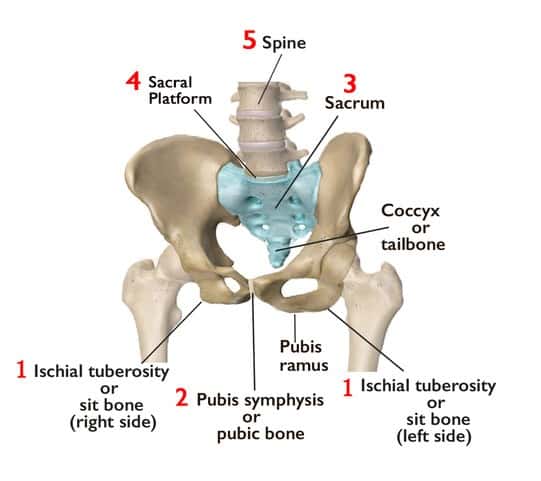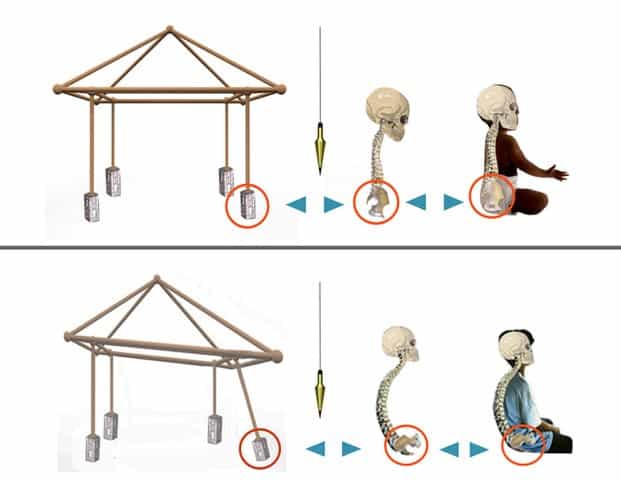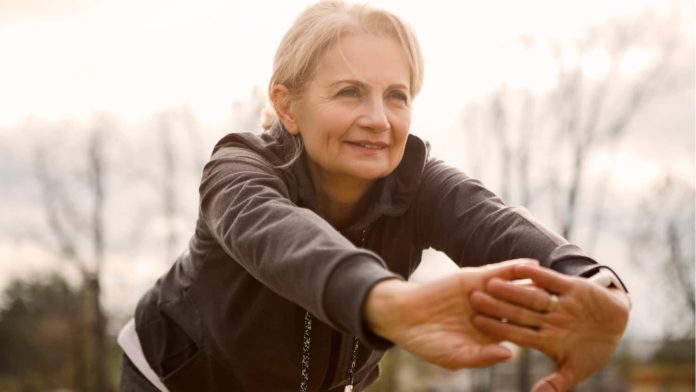It’s rare to find people in our society, especially past a certain age, who sit or stand with a fully-elongated, upright spine. In fact, chronic rounding of the spine, due to unhelpful postural habits, is compounded as we age.
Perhaps you’ve made attempts to pull yourself up into a more
upright position with limited success. This is a common scenario, since the
real secret to an upright spine lies, not so much in the spine itself, but in
the foundation on which the spine sits – the pelvis.
In order for anyone to sit up straighter and more comfortably, the
pelvis must be in the specific position that supports an upright spine.
Each of us first discovers this as a healthy baby and toddler, but
life often intervenes, and it may be necessary to re-learn how to “park”
our pelvis. In order to accomplish this, it helps to become familiar with our
“sit bones.”
Chances are, if you’ve ever attended an exercise class or
practiced yoga, you’ve heard about your sit bones (sometimes referred to as
“sitz” bones and anatomically named as ischial tuberosities)– two boney knobs on each side of the base of
your pelvis.
These sit bones play a key role in determining if your spine is
able to be both solidly upright and comfortably relaxed, not just while
sitting, but when standing and walking as well.


The pelvis resembles a bowl turned on its side. Many vital
internal organs are housed inside the pelvis, and the torso and legs connect by
way of the hip socket on each side of the pelvis. The sacrum at the back of the
pelvis provides a foundational platform on which we sit.
The Sad Dog, the
Tense Dog, and the Happy Dog
Some years ago, when I first began sharing healthy posture tips with elementary age children in the classroom, I immediately
became aware that children are easily embarrassed by the mere mention of the
word “pelvis” and (god-forbid) “pubic” bone.
To spare them this embarrassment, I asked the children to
imagine being a dog that has just gotten into trouble for chewing a shoe – and I now invite you to do the same as you read through this,
since this dog analogy works well for anyone between ages five and
one hundred, and beyond.
Picture a sad dog, and you’ll “see” that it tucks its tail between
its legs when it gets scolded. As you now tuck your own “tail” (coccyx or tailbone),
notice how your pelvis tips backward and your spine collapses and rounds.
If this position of the pelvis seems familiar to you, there’s a
good chance this is your default position, too. If so, you are hardly alone.
In fact, most of us today catch ourselves collapsing like a sad
dog and then try to counteract this by lifting up our chests and pulling our
shoulders back, using muscle tension to maintain a forced position – like a tense dog.
Before long, we grow tired of the work this takes, and we collapse
back down… only to continue this back-and-forth see-saw of collapsing downward
and then tensing upward, again and again.
The secret to sitting comfortably upright without strain for
longer periods of time is something that all healthy, well-developing babies
and toddlers, the world over, discover all on their own. It’s the innate human
design that supports an upright spine without effort.


Parking Your Pelvis
with Your Hands
To relearn how to naturally set your own pelvis, begin by sitting on a more or less level surface with your feet
flat on the floor and your heels underneath your knees.
Lean forward slightly as you shift your weight to the left and
place your right hand, palm facing up, underneath your right buttock, toward
the middle.
As you bring your weight down onto your hand, shift around a bit
until you feel a boney knob-like protuberance. If you don’t feel it, keep
moving your hand around until you do. Don’t be shy – it’s in there – and you’ll know it when you find it!
Once you’ve found this sit bone, walk your fingers just in front
of the rounded, knobby part, and then use your hand to draw the entire sit bone
out behind you and place it onto the seat of your chair. Remove your
hand, and let your weight come onto both sides of your pelvis.
Pay attention to the difference between how each side feels. Can
you sense how your weight on the right side is now borne by the area in front
of your sit bone?
Next, repeat this exercise with the other side. At this point, you
should be able to notice a couple of things: both sit bones are not just behind
now, but they may sense that they are further apart than they were before.
And now your pubis symphysis, commonly referred to as the
“pubic bone” is now down close to the surface of the chair. In other words,
your pelvis is now tipped forward, instead of backward.


You can think of the pelvis as a foundational cement block, on
which a vertical post supports a simple roof-type structure.
The Hands-Free,
Socially Acceptable Short-Cut for Planting Your Pelvis
Of course, this hands-on approach for pelvic setting wouldn’t be
appropriate in a social situation, though it provides
a deeper experience of how our own individual pelvis works to support
us.
Instead, sit down on the seat with your feet flat on the floor.
Lean forward slightly as you shift your weight to one side.
This time, you’ll simply “walk” the front edge of the opposite sit
bone far back behind you onto the sitting surface, and then repeat this on the
other side. Your pubic bone is down close to the seat and your sit bones are
wide apart.
If you’re feeling any tension in your back or neck after doing
this, you’re most likely lifting up your chest like a tense dog. If this is the
case, take in a gentle and full inhaling breath, and as you exhale, give
yourself permission to release your chest down.
Notice that relaxing the muscles throughout your torso doesn’t
cause your spine to collapse, as long as your pelvis remains well-parked like a
“happy dog.” You may also feel your chin drop slightly as your neck
relaxes along with any other unnecessary tension.


Not only will you find that sitting like a Happy Dog makes it
easier to wag your tail (wink!), sitting on a well-planted pelvis will put a
smile on your face!
It does take a bit of practice to remember to apply this to your
daily life, but it gets easier the more you practice it. And, remember, it is
indeed possible to teach “old dogs” new tricks!
What did you notice about sitting on a happy dog pelvis compared
to sitting like a sad dog or a tense dog? What’s your usual sitting position
and how does it make you feel at the end of the day? Let’s have a conversation!













